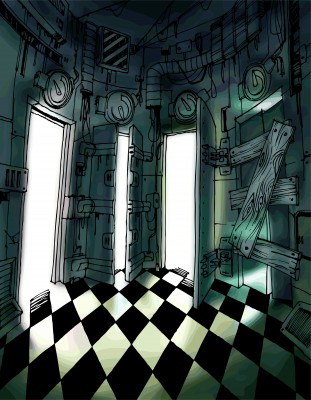- Brittleness
- Robustness
- Diversity
- “Niche” Computer Systems
- Downtime
- Meaningful Use
- Efficiency
- Anticryptography
- Color
- RHIO
- “Wrong Patient”
- Cognitive Friction
- Dialog-Box Rooms
- Ignore
- What’s in a word?
- ALLCAPS
- Layers
- Consistency
- Menu
- Cost Disease
- RAND
- PHR
- Model T
- Giveaway
- Skeuomorphism
- Icon
- Signal-to-Noise Ratio
- Anti-Data Pixels
- iPhones
- Suicide
- Anthropology
- Wireframes
- Fitts’s Law
- Kludge
- Ebola
- Pop-Up
- Clicks
- Bad Apple
- Testing
- Bold
- Point-and-Click
- Anti-User Pixels
- Flat
- Glucose
An experimental study recently (late 2011) ballyhooed in the press looks at how we tend to forget things as we move into a doorway, and that walking back into the room doesn’t help you recover the memories. (Duh. I could have told anyone this. As could everyone.) Not sure why prior studies on the same topic haven’t been so widely reported. And does this have something to do with the fact that those with Parkinson’s Disease get stuck in doorways?
Combine this with Alan Cooper’s dictum, from the first edition of About Face: The Essentials of User Interface Design: “A dialog box is another room. Have a good reason to go there.”
We get another heuristic (rule of thumb) for usability: “The more pages or dialog boxes a user has to traverse to accomplish a task, the less likely they are to remember what they were thinking at the beginning.”
In settings where distractions are rife, this effect is more likely to result in error, as you don’t have the cueing of the original screen to remind you where you were. The high degree of interruptions in the Emergency Department is a classic example.
Therefore, for applications for such environments should use techniques such as breadcrumb trails.
Again, duh. But the point is that the transition from page to page, or page to dialog box, is the transition where most of the forgetting occurs.
It’s not just you.
Tags: Doorway, Computers, Forgetting, Alan Cooper, Room, Information Technology, Dialog Box, Tutorial, Screen, Usability, Parkinson's Disease, User Interface, Human Error, Information Design


